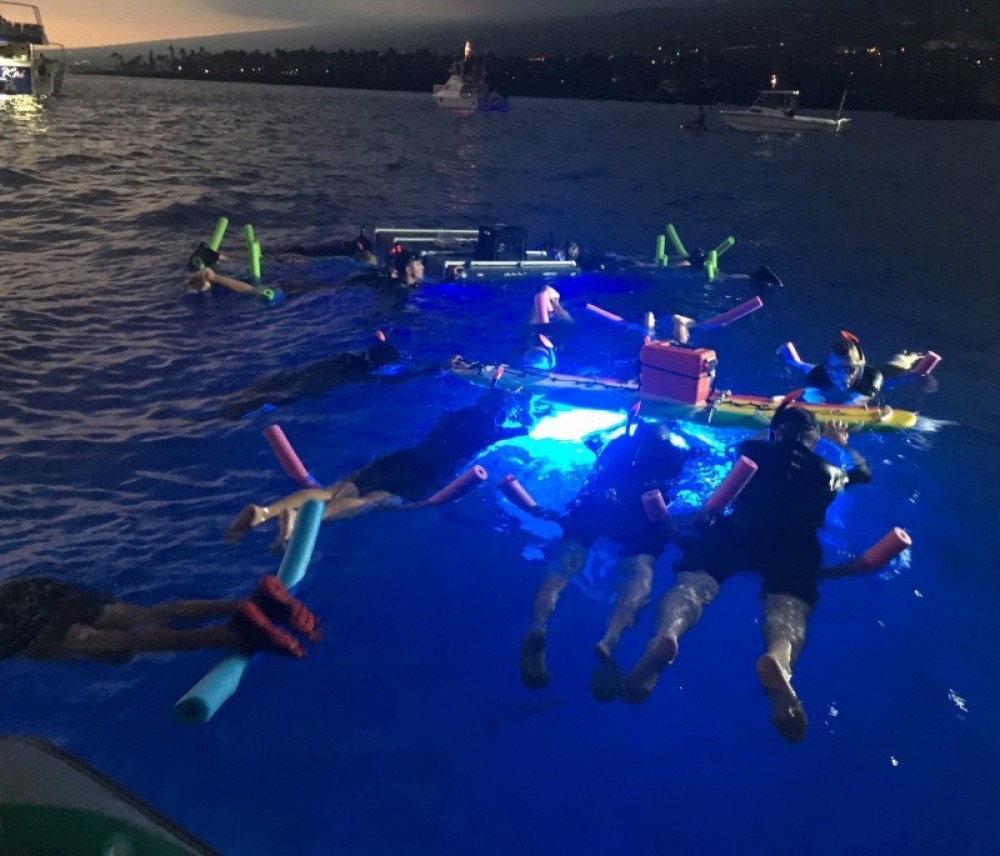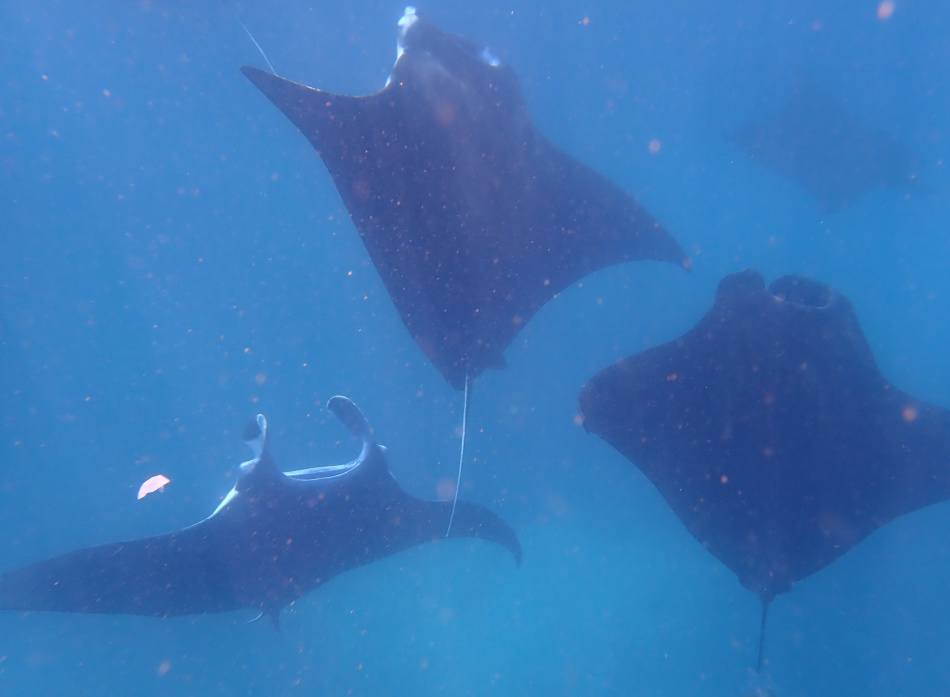

While they won’t eat or sting you, you should always be careful around large animals like manta rays, because accidents can happen and both parties can end up injured if you don’t consider the impact of your encounter. Only large sharks and killer whales are known to eat manta ray, and this is rare. Why don’t manta rays have stinging tails? Probably because they have very few predators. It is thought that this an evolutionary remnant of when manta rays and stingrays were part of the same species, but over time have branched off from one another. Their tail may look similar to a stingray tail but does not serve any purpose.

They do not have stinging tails or barbs. Manta rays belong to the same family of animals as the stingray, but they are not stingrays.

Manta rays can be intimidating animals to encounter because of their size and curiosity (not to mention their enormous mouths) but they should be considered as harmless as a whale. These gentle giants are filter feeders, gliding through the ocean on their massive wings feeding on microscopic plankton near the surface of the water. They are calm and delicate animals with no aggressive behaviours and are not predatory in nature. Divers and snorkelers that swim with manta ray should be prepared for the giants of the ocean to get close.īut is that a risk? Are Manta Rays Dangerous? Manta rays are known for their curiosity and close interactions with humans. They are fast, agile and confident animals. A close relation to the shark, manta rays are massive flat fish that have wide-yawning mouths capable of consuming vast amounts of food - around 5 kilos per day. At 1,600kg in weight, and with a nine-metre wingspan, these enormous creatures absolutely dwarf a fully grown adult.
#Swimming with manta rays full#
For the full up-close experience, however, book a manta ray boat tour for an evening snorkel or scuba adventure.Manta rays are one of the largest creatures in the ocean. See the creatures’ massive shadows at the lookout called “Manta Ray Point”. The Mauna Kea Beach Hotel turns on floodlights over the water after sunset, which attracts microscopic sea organisms, enticing manta rays. On land, you can spot manta rays in the water at properties like the Mauna Kea Beach Hotel, Autograph Collection, a picturesque resort nestled along the white sand horseshoe of Kauna‘oa Bay. The manta rays off the coast of the Big Island do not migrate and can be seen along the feeding grounds year-round, which means that the best time to swim with them is any time.

There are three feeding locations where manta rays are consistently seen in the evening: Manta Village, Manta Heaven, and near the Kawaihae harbor. The Big Island is quite unique and remarkable for manta ray sightings. Researchers are straightforwardly able to track individual manta rays and can identify them from year to year. The markings-spots and splotches-on their underbodies are like a human fingerprint in that they’re all unique. When they approach, you’ll marvel at their bony undersides, long spiny tails, and mammoth open mouths as they roll, turn, and move around you. These massive, balletic, and intelligent species, spanning up to 16 feet-long with wingspans of around 20 feet-wide, neither sting nor bite and they’re considered one of the safest large animal encounters to enjoy. Manta ray, mouth open wide, feeding on plankton off the Kona coast, Big Island Hawaii getty


 0 kommentar(er)
0 kommentar(er)
